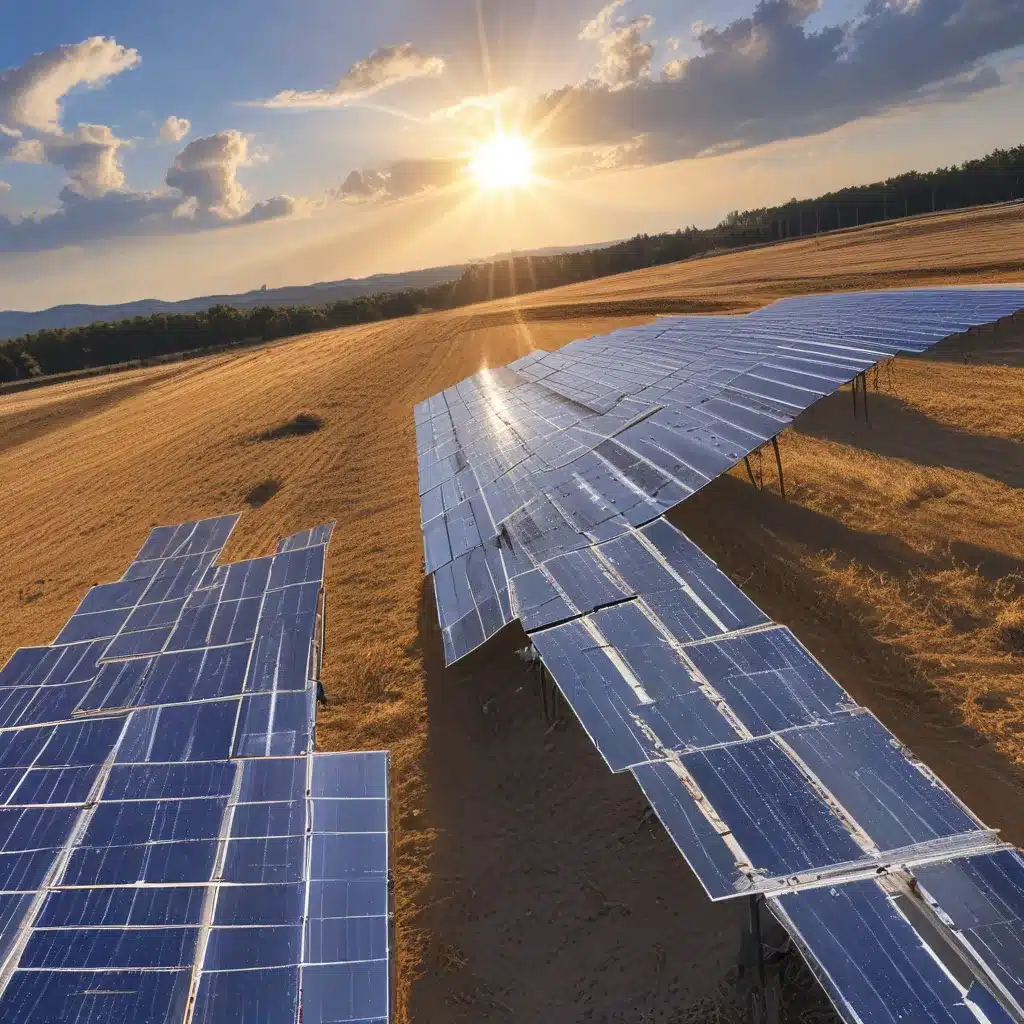
Unlocking the Power of the Sun: A Solar Enthusiast’s Journey
As a passionate solar energy advocate, I’ve always been fascinated by the incredible potential of the sun’s rays. Growing up, I marveled at the idea that something as simple as sunlight could be harnessed to power our homes, businesses, and communities. And let me tell you, the more I learned about solar technology, the more excited I became about its transformative power.
It all started when I installed my first solar panel on the roof of my humble abode. I’ll never forget the sense of pride and accomplishment I felt the first time I saw my electric meter spinning backwards, as my little solar system fed clean, renewable energy back into the grid. From that moment on, I was hooked. I dove headfirst into the world of solar, eager to uncover every trick and technique I could to maximize the efficiency and output of my system.
The Science Behind Solar Success
Now, I know what you’re thinking – solar panels are pretty straightforward, right? Just slap them on the roof and let the sun do its magic. Well, my friend, there’s a whole lot more to it than that. You see, the secret to truly unlocking the power of the sun lies in understanding the science behind solar energy production.
At its core, a solar photovoltaic (PV) system works by converting the photons in sunlight into direct current (DC) electricity. This electricity is then fed through an inverter, which transforms it into the alternating current (AC) we use to power our homes and businesses. Maximizing the efficiency of this conversion process is the key to getting the most out of your solar setup.
Conquering the Elements: Overcoming Environmental Challenges
Of course, the sun isn’t the only factor at play when it comes to solar power production. In fact, environmental conditions can have a significant impact on the performance of your system. Things like temperature, cloud cover, and even partial shading can all contribute to a dip in your solar panel’s output.
But fear not, my fellow solar enthusiasts! There are a number of techniques and strategies you can employ to mitigate the effects of these environmental challenges. For instance, did you know that the angle and orientation of your solar panels can make a big difference in how much sunlight they’re able to absorb? By carefully positioning your panels to track the sun’s movement throughout the day, you can maximize their exposure and boost your overall energy production.
Harnessing the Power of Intelligent Tracking
Speaking of tracking the sun, one of the most cutting-edge innovations in the solar industry is the development of advanced maximum power point tracking (MPPT) controllers. These sophisticated devices continuously monitor the performance of your solar panels and make real-time adjustments to keep them operating at their maximum efficiency.
Gone are the days of passive, one-size-fits-all solar setups. Today’s MPPT controllers are powered by artificial intelligence and machine learning algorithms that can adapt to changing weather conditions, partial shading, and even fluctuations in temperature. By constantly tweaking the voltage and current of your solar panels, these advanced controllers ensure that you’re always extracting the absolute maximum amount of energy from the sun.
The Dynamic Duo: Pairing Solar with Energy Storage
Of course, the true magic of solar power isn’t just about generating electricity – it’s about being able to store and use that energy when you need it most. That’s where battery storage systems come into play. By coupling your solar PV array with a high-capacity battery bank, you can effectively create your own personal power plant, capable of supplying your home or business with clean, renewable energy around the clock.
Imagine being able to power your home entirely from the sun, even when the clouds roll in or the sun sets. With the right battery storage solution, that dream can become a reality. And the best part? As battery technology continues to advance, the cost of these integrated solar-storage systems is becoming more and more affordable for homeowners and businesses alike.
Maximizing Your Solar Savings: Tips for Homeowners
Speaking of cost, one of the biggest concerns I hear from people interested in going solar is the upfront investment. And I get it – solar panels and installation can be a significant expense, especially for larger systems. But here’s the thing: the long-term savings and benefits of solar energy far outweigh those initial costs.
In fact, homeowners who switch to solar can save thousands of dollars on their energy bills over the lifetime of their system. And with tax credits, rebates, and other incentives available in many areas, the financial barriers to entry have never been lower.
But the savings don’t stop there. By strategically positioning your solar panels, optimizing your system’s efficiency, and integrating energy storage, you can further maximize the return on your solar investment. And let’s not forget the added benefit of reducing your carbon footprint and doing your part to combat climate change.
The Future is Bright: Solar’s Endless Potential
As I reflect on my own solar journey, I’m filled with a sense of excitement and optimism for the future of renewable energy. The advancements we’ve seen in solar technology over the past decade have been truly remarkable, and I can only imagine what the next 10 or 20 years will hold.
Whether you’re a homeowner looking to take control of your energy costs, a business owner seeking to boost your sustainability, or simply a curious individual interested in the power of the sun, I encourage you to explore the world of solar energy. Because trust me, when you unlock the secrets to maximizing your solar power production, the possibilities are endless.
So, what are you waiting for? Let’s get out there and harness the sun’s boundless energy, one solar panel at a time. The future is bright, my friends, and it’s powered by the power of the sun.


